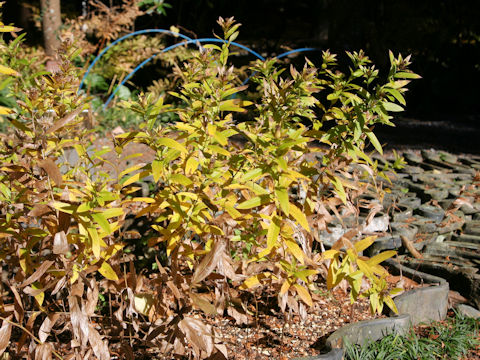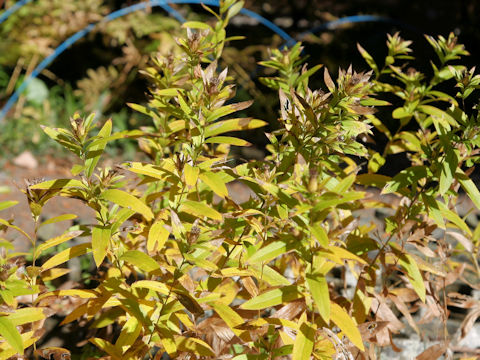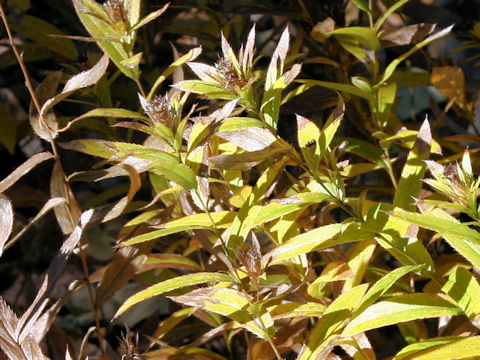
|
The Cang shu (Atractylodes lancea) belongs to Asteraceae (the Aster family). It is a perennial herb that is native to China. It grows in forests, grasslands, and bushes in mountainous areas, and grows 60 to 80 cm tall. It is said to have been introduced to Japan for medicinal purposes around the Kyoho period (1716-1736) during the Edo period. The stem is erect and sometimes branched. The leaves are ovate-lanceolate or narrowly lanceolate and leathery, with pointed tips and serrated edges. From September to October, it produces flower stalks and white flower heads. The corolla consists of only disk florets. Since only male plants are cultivated in Japan, they do not bear fruit. The rhizome contains atractylodine and other ingredients that have stomachic, intestinal, diuretic, and other effects. In Chinese, it is called "蒼朮" (cang shu).
|


